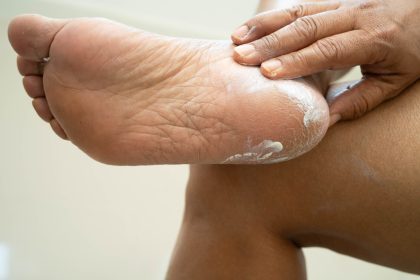Pregnancy transforms not only your body but also your skin. The journey to motherhood brings hormonal shifts that can affect everything from complexion to sensitivity, requiring expectant mothers to reconsider their skincare approach. While the fabled pregnancy glow becomes reality for some, others encounter unprecedented skin challenges that demand attention and adaptation.
The shifting landscape of pregnancy skin
Hormonal influences reshape the skin’s behavior during pregnancy. The surge in hormones, particularly estrogen and progesterone, increases blood flow and oil production. This physiological response explains why some expectant mothers experience enhanced radiance while others face new concerns.
Hyperpigmentation emerges as a primary issue for many pregnant women. Melasma, sometimes called the mask of pregnancy, appears as dark patches typically on the forehead, cheeks, and upper lip. This condition affects up to 70% of pregnant women, with higher incidence among those with deeper skin tones.
Acne flares represent another common challenge, particularly during the first and second trimesters. The hormonal fluctuations stimulate sebaceous glands, resulting in excess oil production that can clog pores and trigger breakouts even in women who rarely experienced acne before pregnancy.
The expanding abdomen inevitably faces stretching that tests skin elasticity. The rapid growth can rupture collagen and elastin fibers beneath the skin surface, resulting in stretch marks that initially appear as reddish or purplish lines before fading to a silvery hue over time.
Navigating skincare safety concerns
Ingredient vigilance becomes paramount during pregnancy. The skin absorbs a percentage of topically applied substances, potentially allowing them to enter the bloodstream and cross the placental barrier. This reality necessitates careful scrutiny of skincare formulations.
Retinoids top the list of ingredients to avoid. These vitamin A derivatives, while excellent for addressing acne and signs of aging, pose potential risks to fetal development. Both prescription-strength formulations and over-the-counter options warrant elimination from pregnancy skincare routines.
Hydroquinone, commonly incorporated into products addressing hyperpigmentation, lacks sufficient safety data for use during pregnancy. The relatively high absorption rate of this ingredient raises concerns about potential systemic effects, making it prudent to select alternative brightening agents.
Chemical exfoliants containing high concentrations of salicylic acid deserve caution. While facial products containing this beta-hydroxy acid in concentrations below 2% are generally considered acceptable when used sparingly, body treatments with higher concentrations should be avoided due to increased absorption potential.
Essential oils present a nuanced consideration. While some, like lavender and chamomile, have long histories of safe use, others may stimulate contractions or cause sensitivity reactions. The lack of standardization in essential oil production further complicates their safety assessment during pregnancy.
Building a pregnancy-safe regimen
Gentle cleansing forms the foundation of a pregnancy-appropriate skincare routine. Mild, fragrance-free formulations help maintain the skin barrier while removing impurities. Cleansers containing glycerin, ceramides, and hyaluronic acid support hydration without introducing potentially problematic ingredients.
Sun protection becomes even more critical during pregnancy, as increased hormones heighten photosensitivity and vulnerability to pigmentation issues. Physical sunscreens containing zinc oxide or titanium dioxide offer broad-spectrum protection without the potential concerns associated with certain chemical filters.
For addressing pregnancy acne, azelaic acid emerges as a particularly valuable option. This naturally occurring acid possesses antibacterial and anti-inflammatory properties while demonstrating safety during pregnancy. Its additional ability to reduce hyperpigmentation makes it multifunctional for expectant mothers.
Moisture requirements typically increase during pregnancy as hormone levels affect the skin’s natural hydration mechanisms. Products containing hyaluronic acid, squalane, and ceramides help maintain optimal moisture levels without triggering additional breakouts or sensitivity reactions.
Professional treatments during pregnancy
Facial adaptations become necessary for pregnant women who regularly receive professional skincare treatments. Many skincare specialists now offer pregnancy-specific facial protocols that eliminate potentially problematic ingredients while addressing common pregnancy-related skin concerns.
Light therapy treatments, particularly those using LED technology, provide a non-invasive option for managing acne and inflammation during pregnancy. These treatments stimulate cellular processes without introducing potentially harmful substances into the skin.
Manual lymphatic drainage techniques can help manage the increased fluid retention that often accompanies pregnancy. These gentle massage approaches stimulate the lymphatic system, potentially reducing puffiness particularly around the facial contours.
The postpartum transition
Skin recovery following childbirth introduces another phase of adaptation. Hormonal levels undergo dramatic shifts after delivery, potentially triggering new skin responses including dryness, sensitivity, or breakouts.
The postpartum period may allow for gradual reintroduction of certain ingredients previously avoided during pregnancy, though nursing mothers should maintain awareness of substances that may pass through breast milk. Consultation with healthcare providers remains advisable when considering expanding the skincare regimen.
Many pregnancy-related skin changes resolve naturally within months of delivery, though some, like melasma, may persist longer or become permanent features. Approaching these changes with patience while focusing on consistent skincare fundamentals supports the skin’s recovery process.
Pregnancy represents a unique opportunity to reevaluate skincare priorities, often leading to discoveries of gentler yet effective approaches that benefit skin health long after childbirth. The temporary limitations inspire creativity in addressing skin concerns while acknowledging the profound importance of making choices that support both maternal and fetal wellbeing.
















